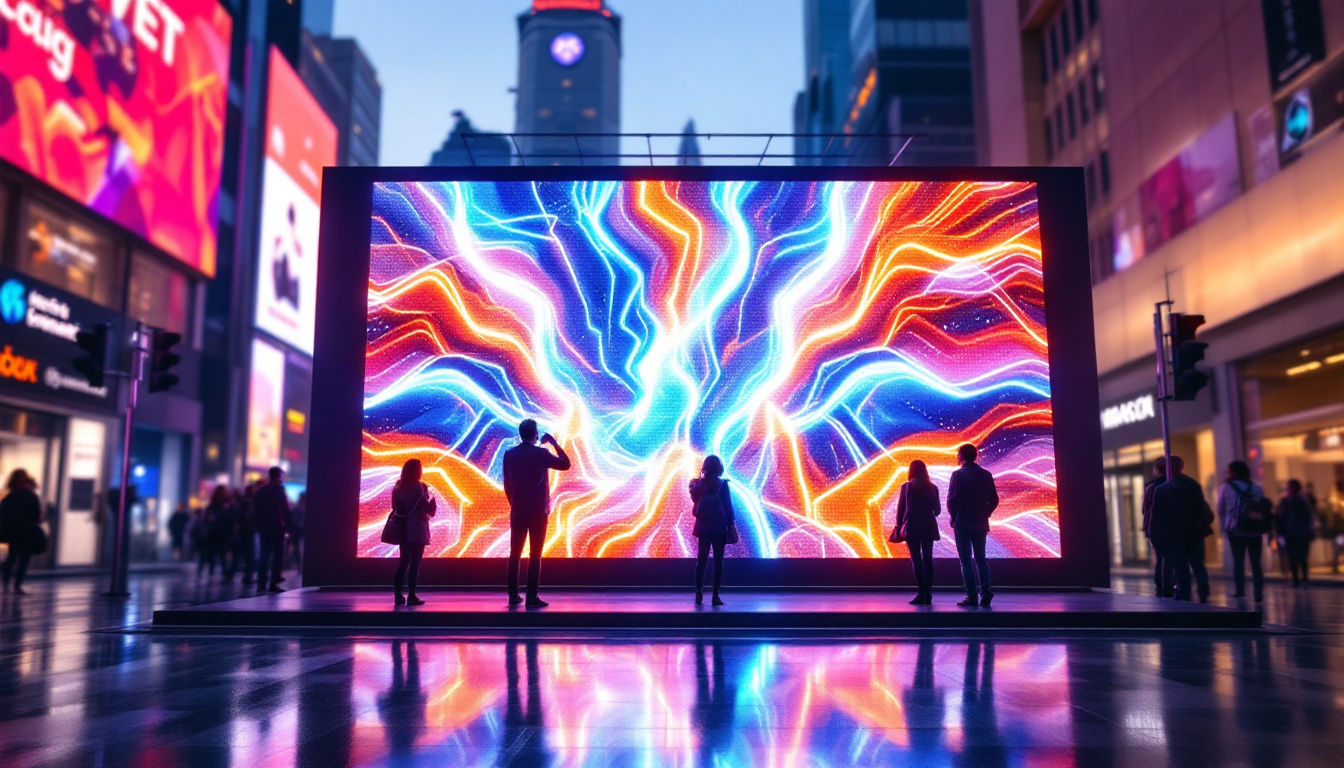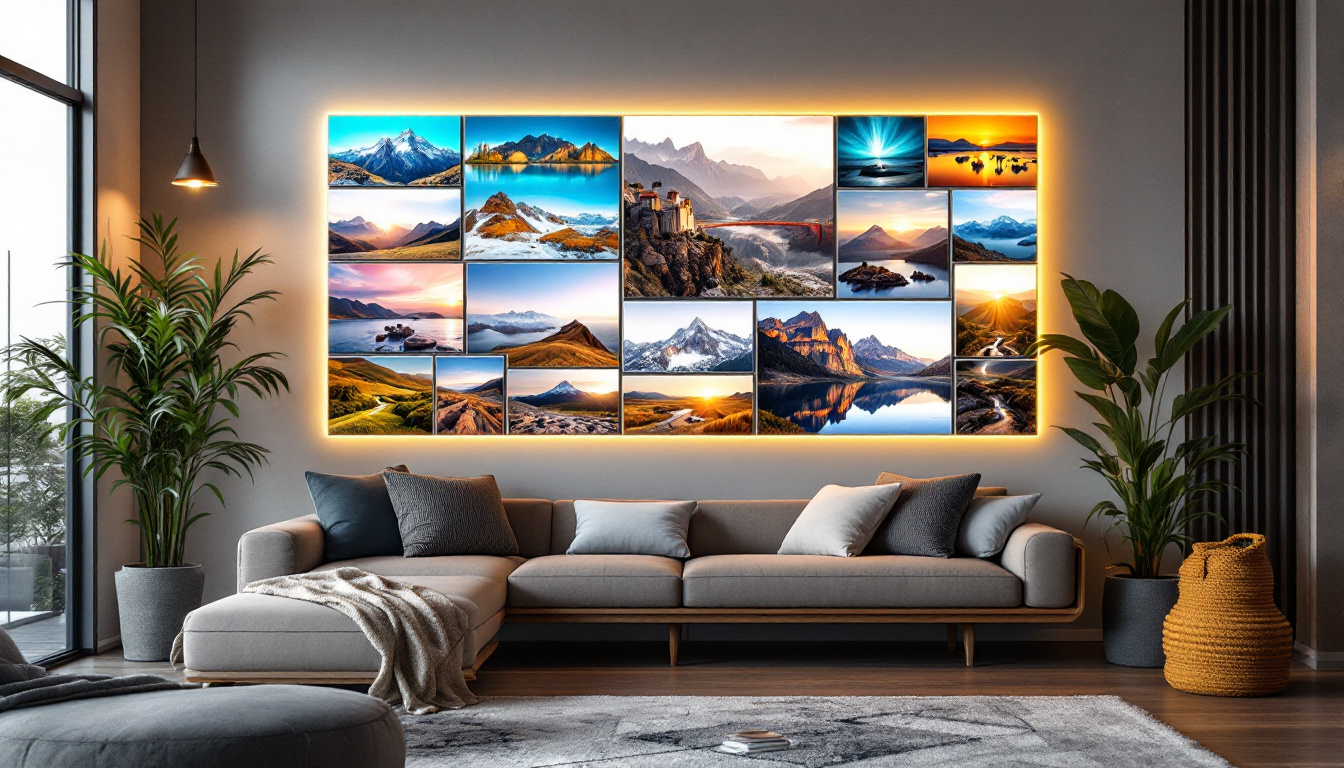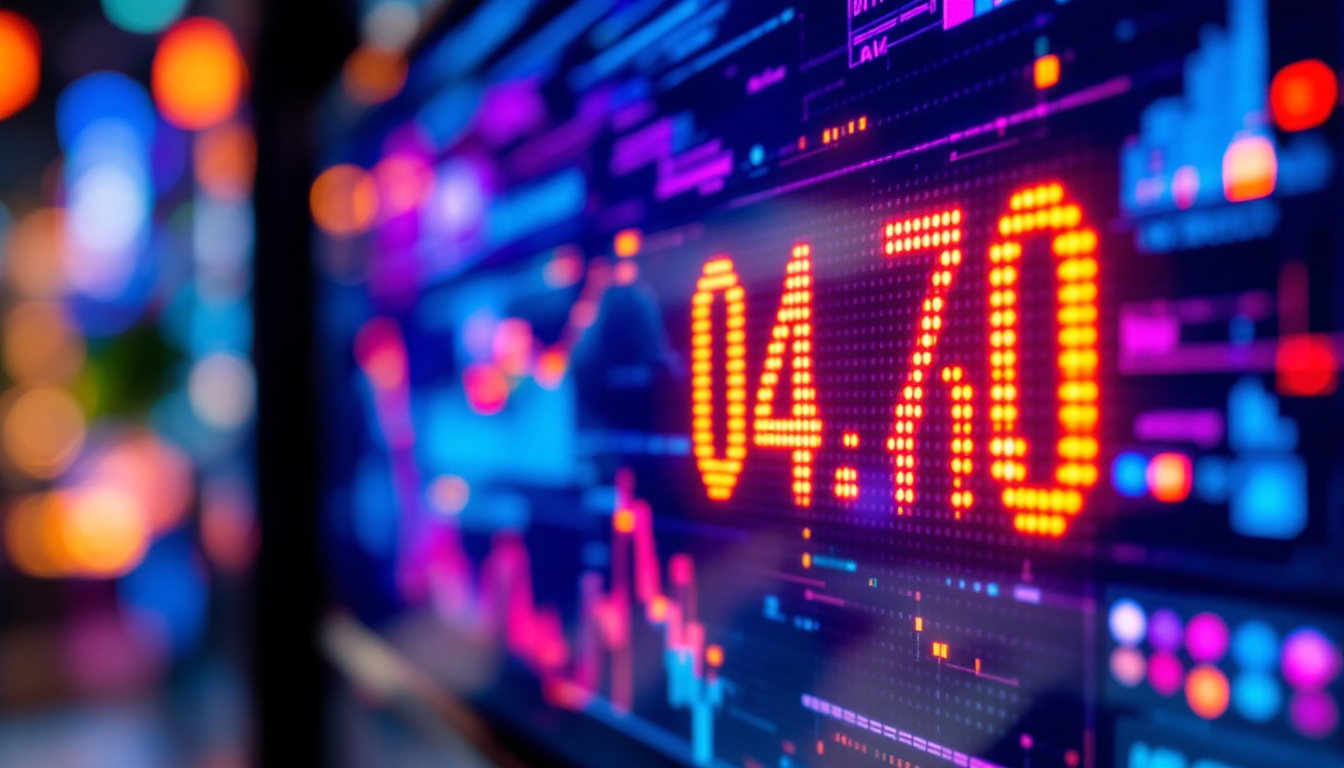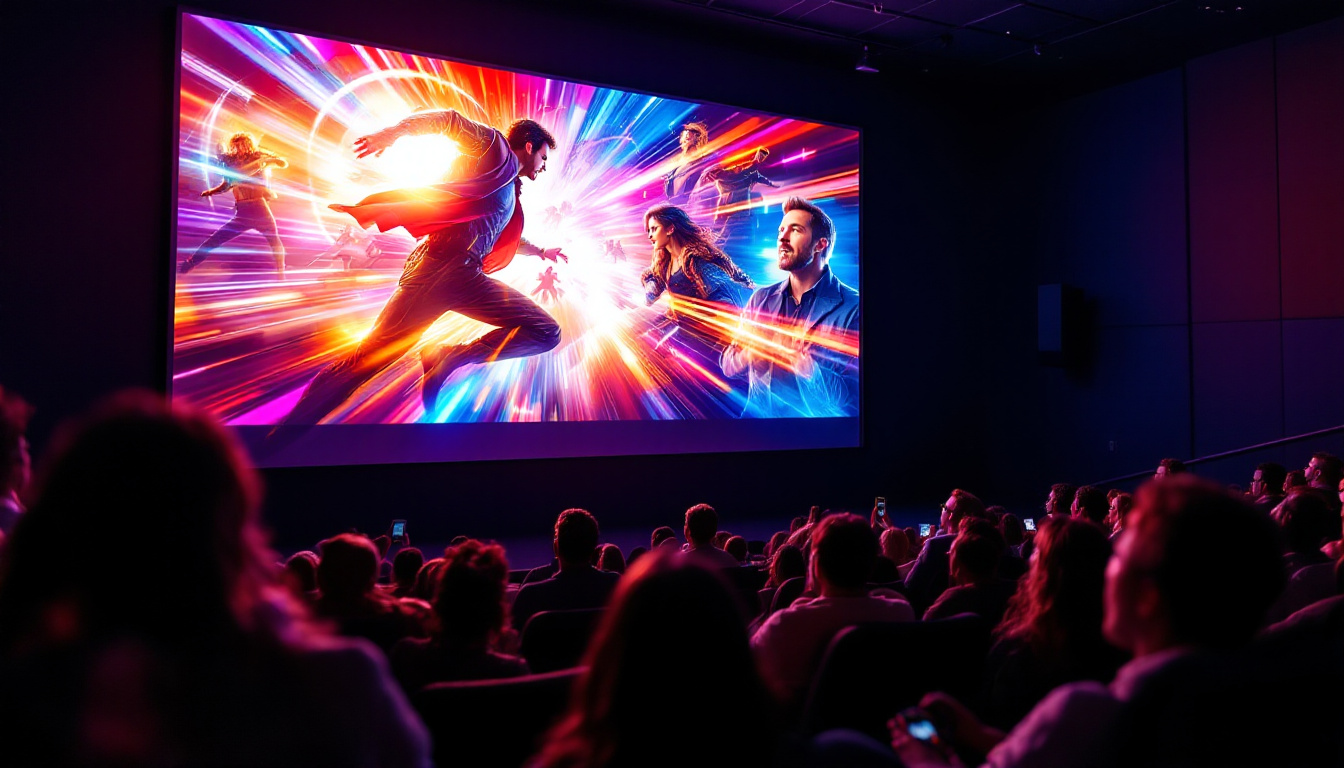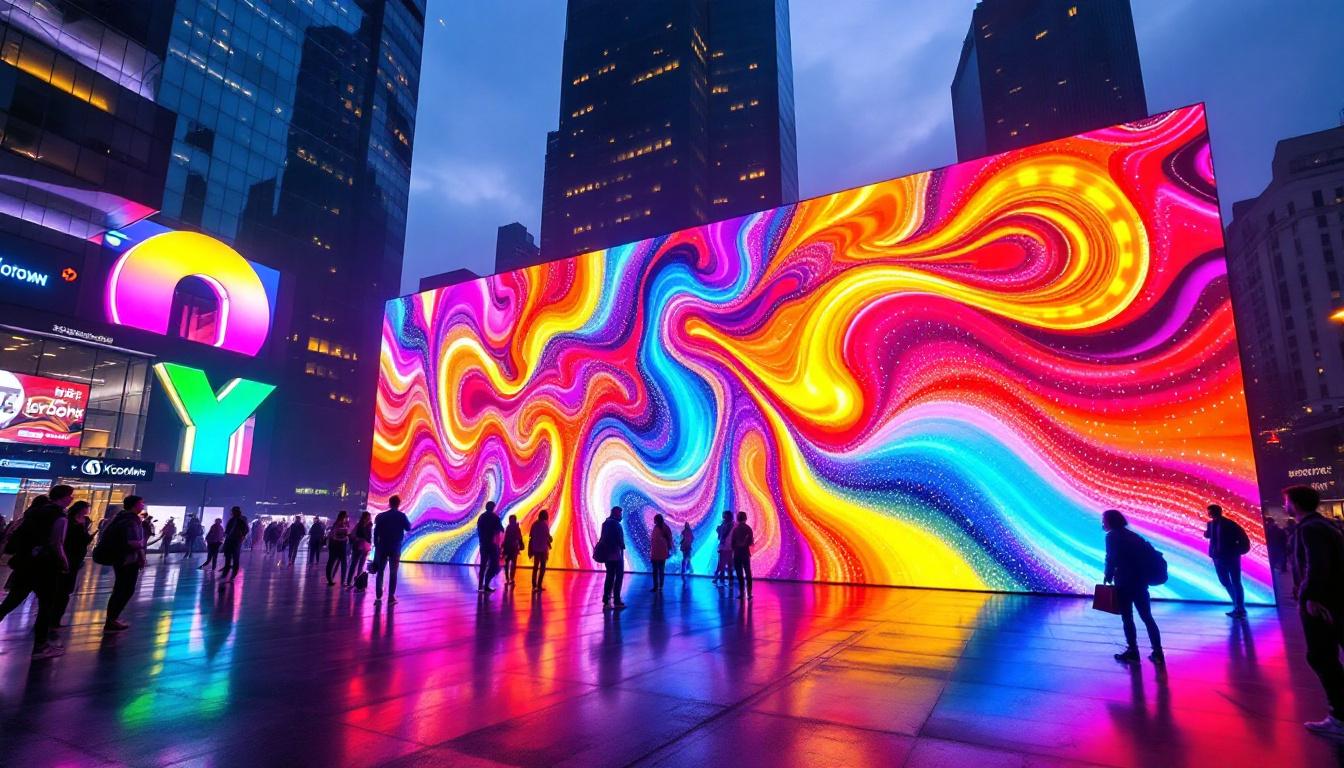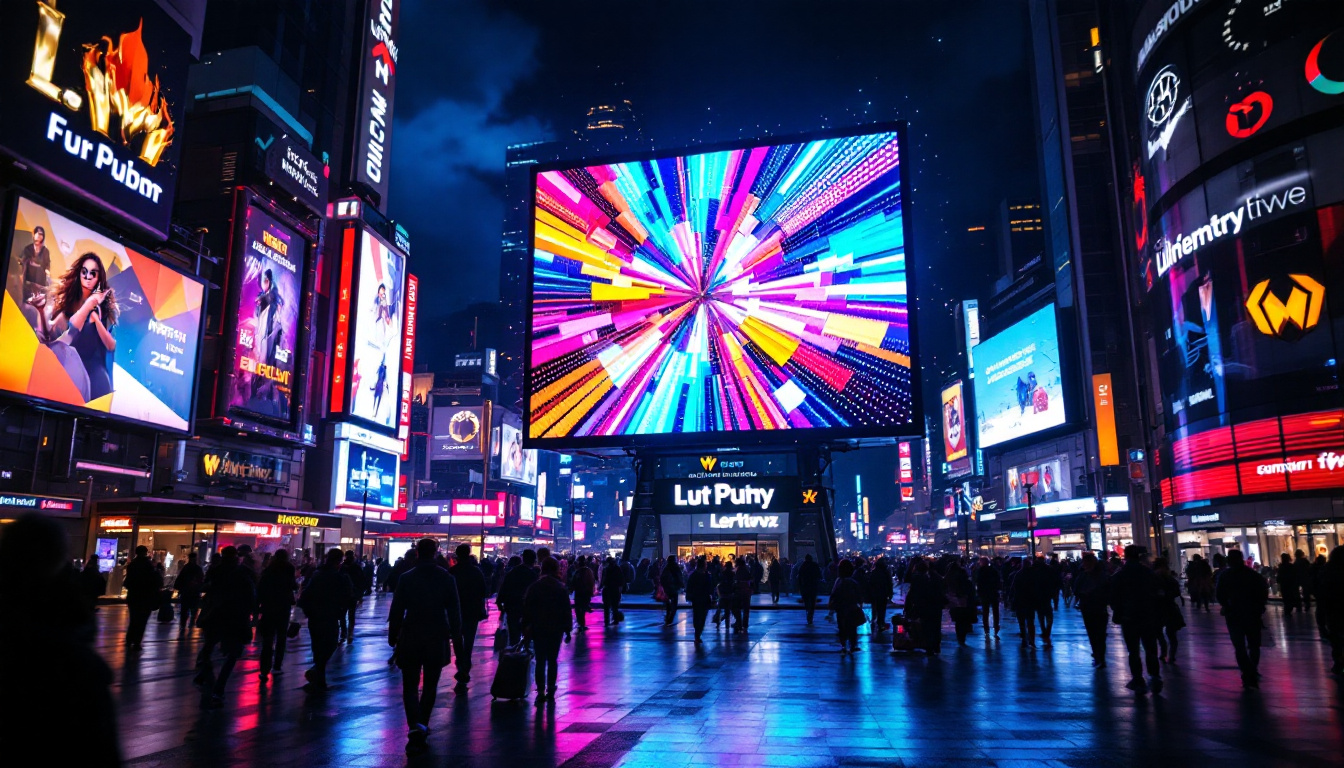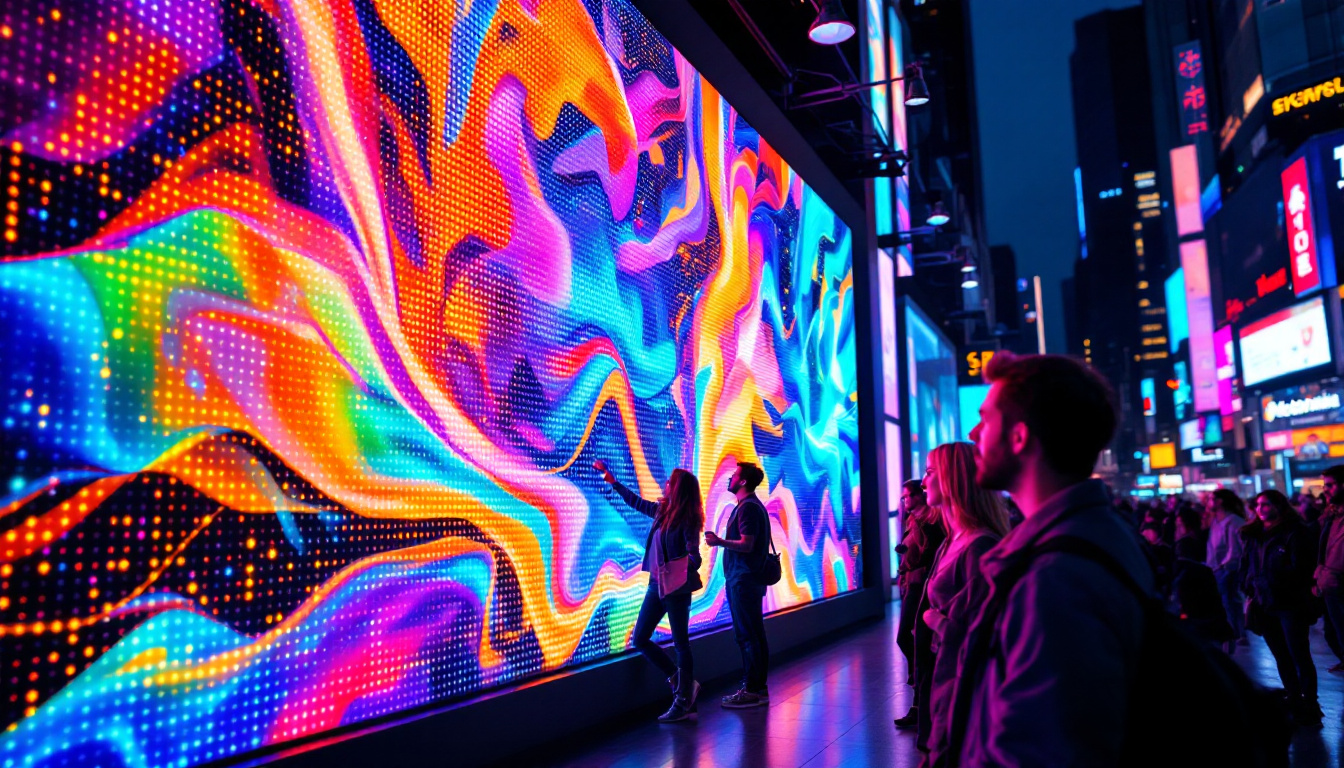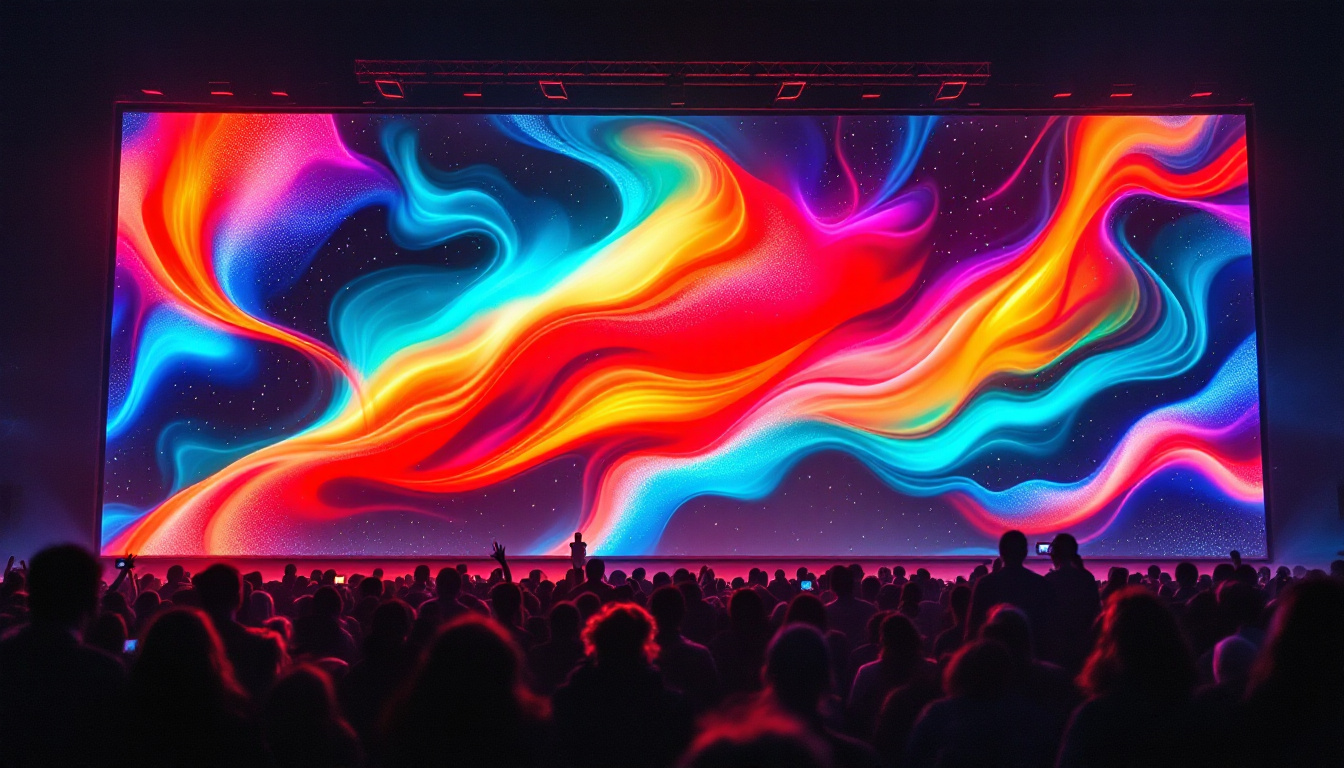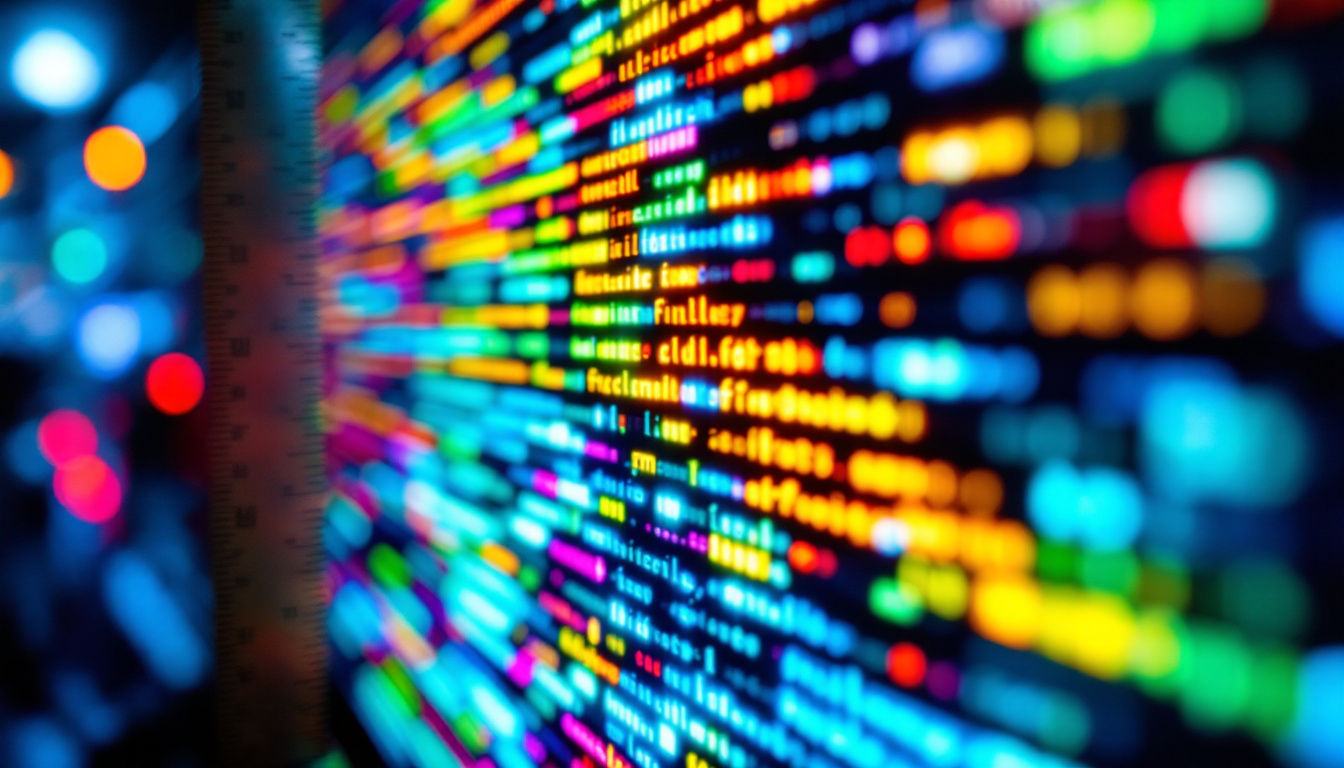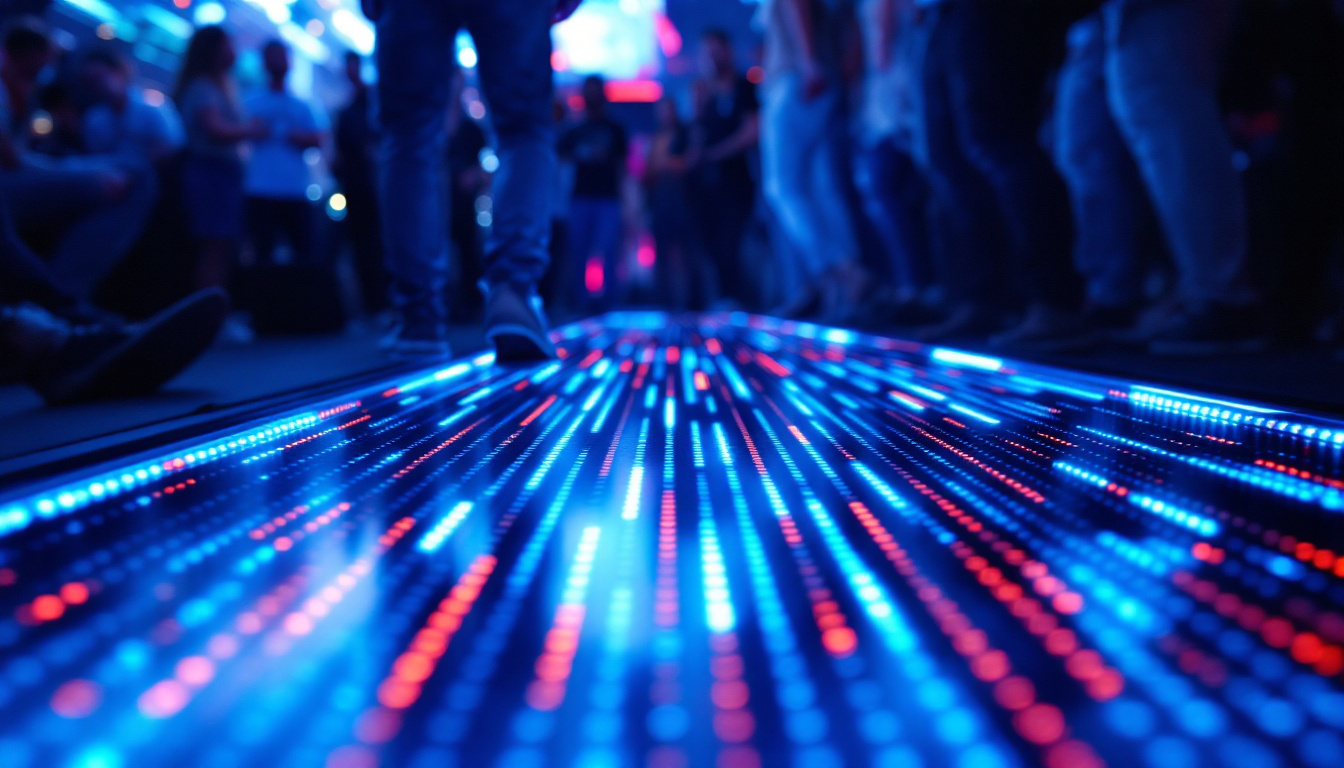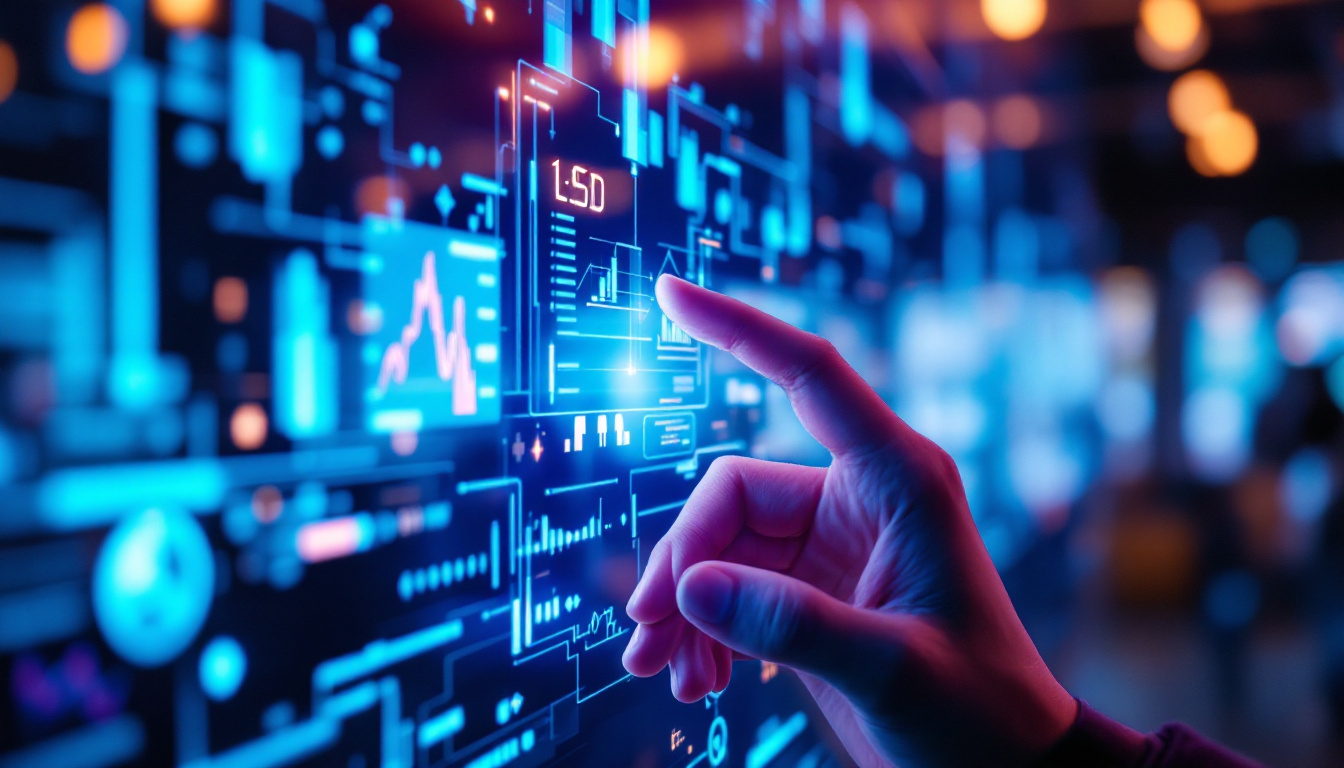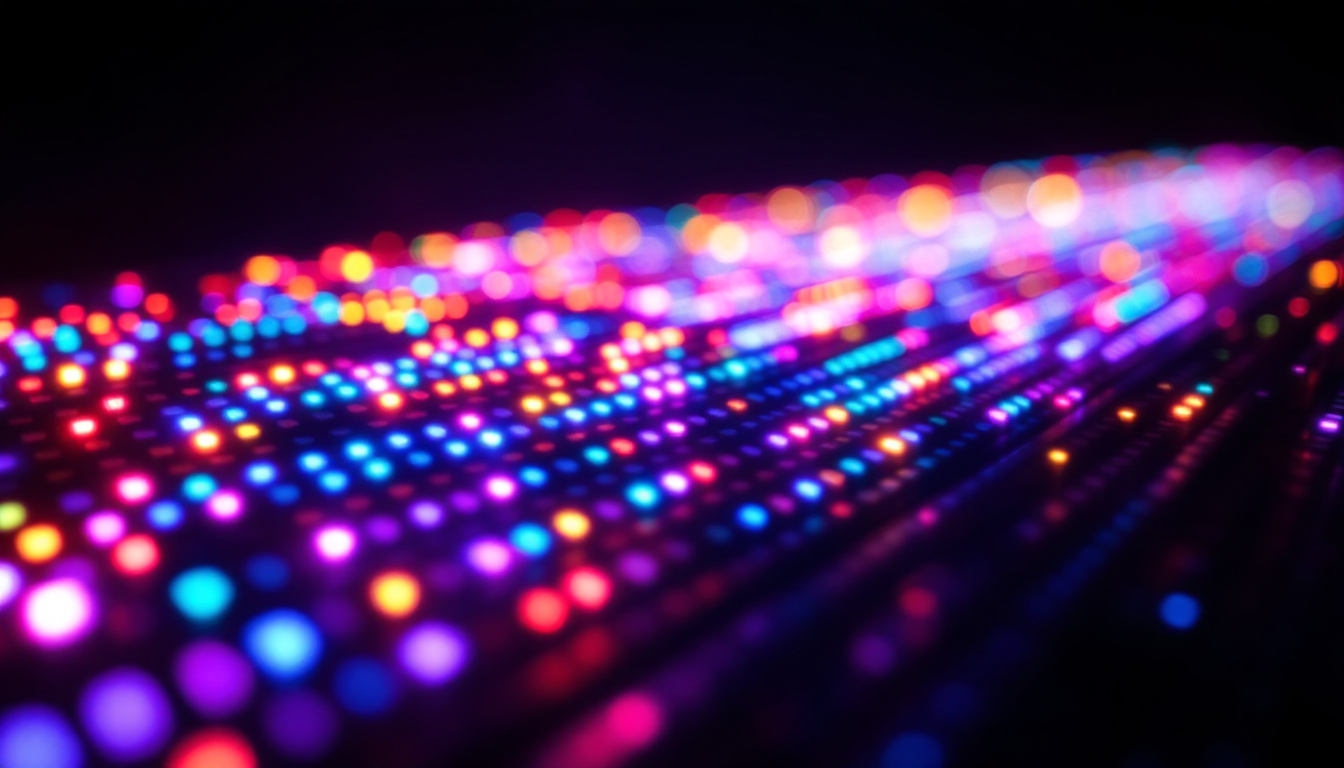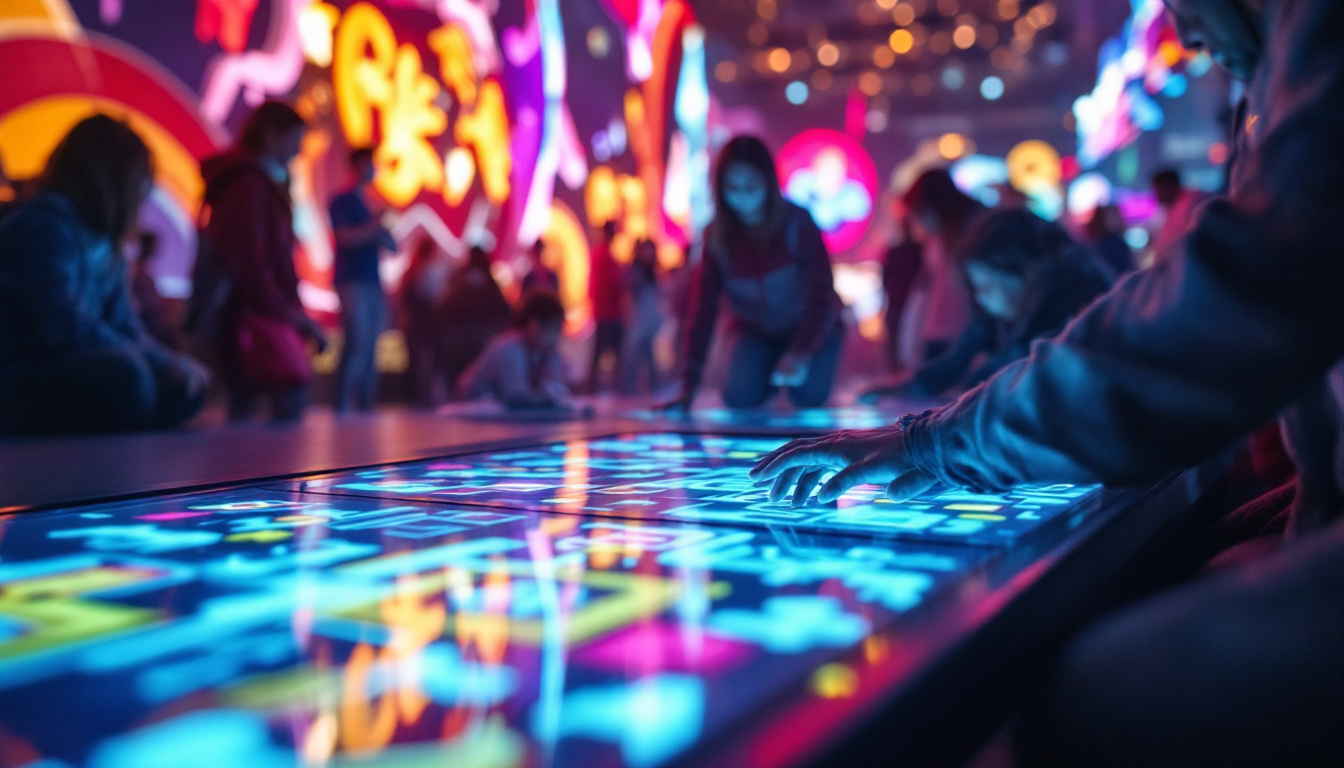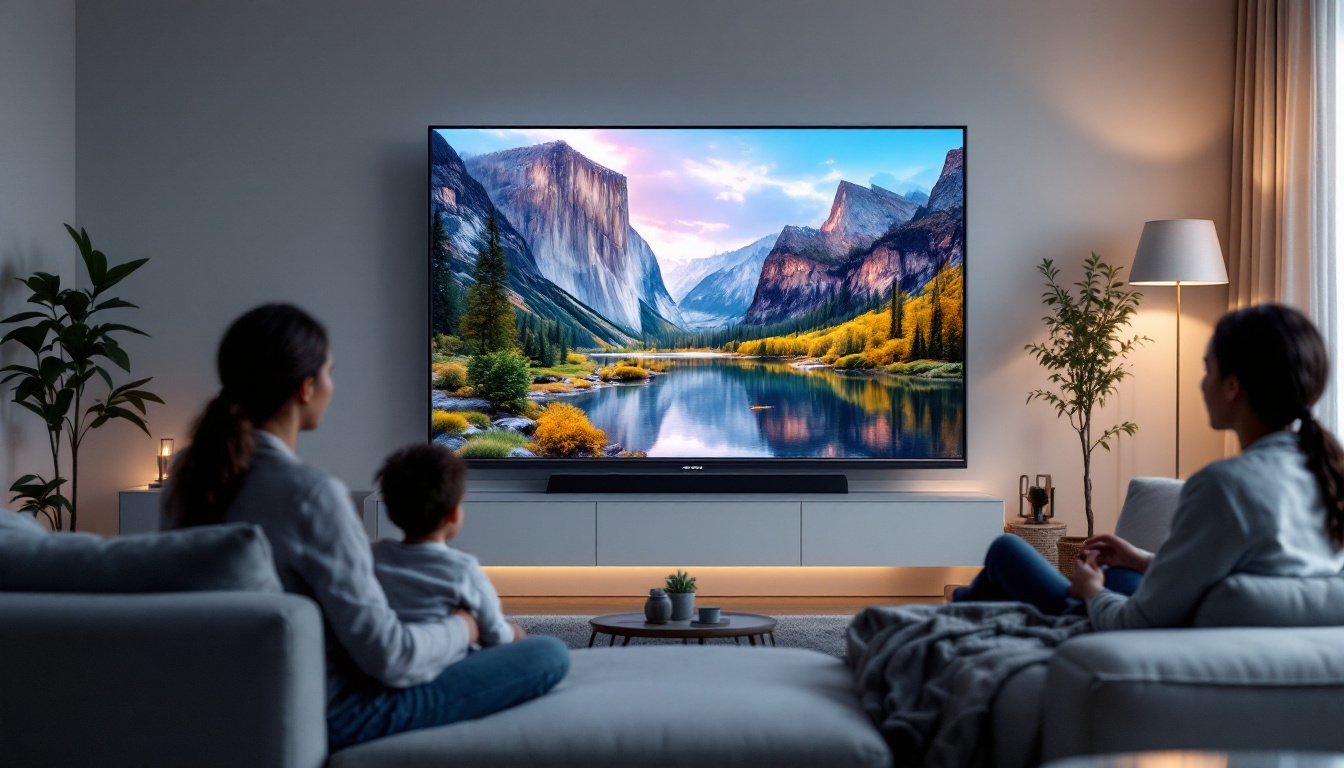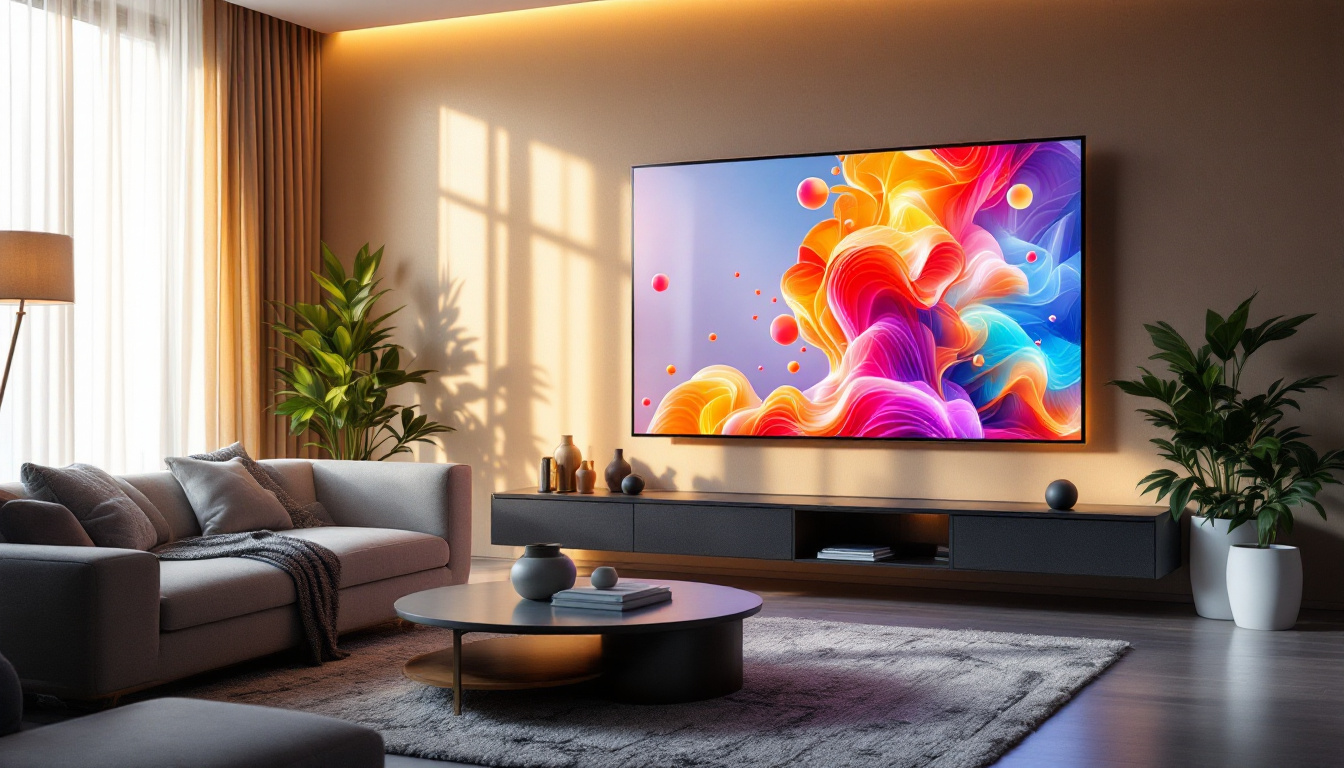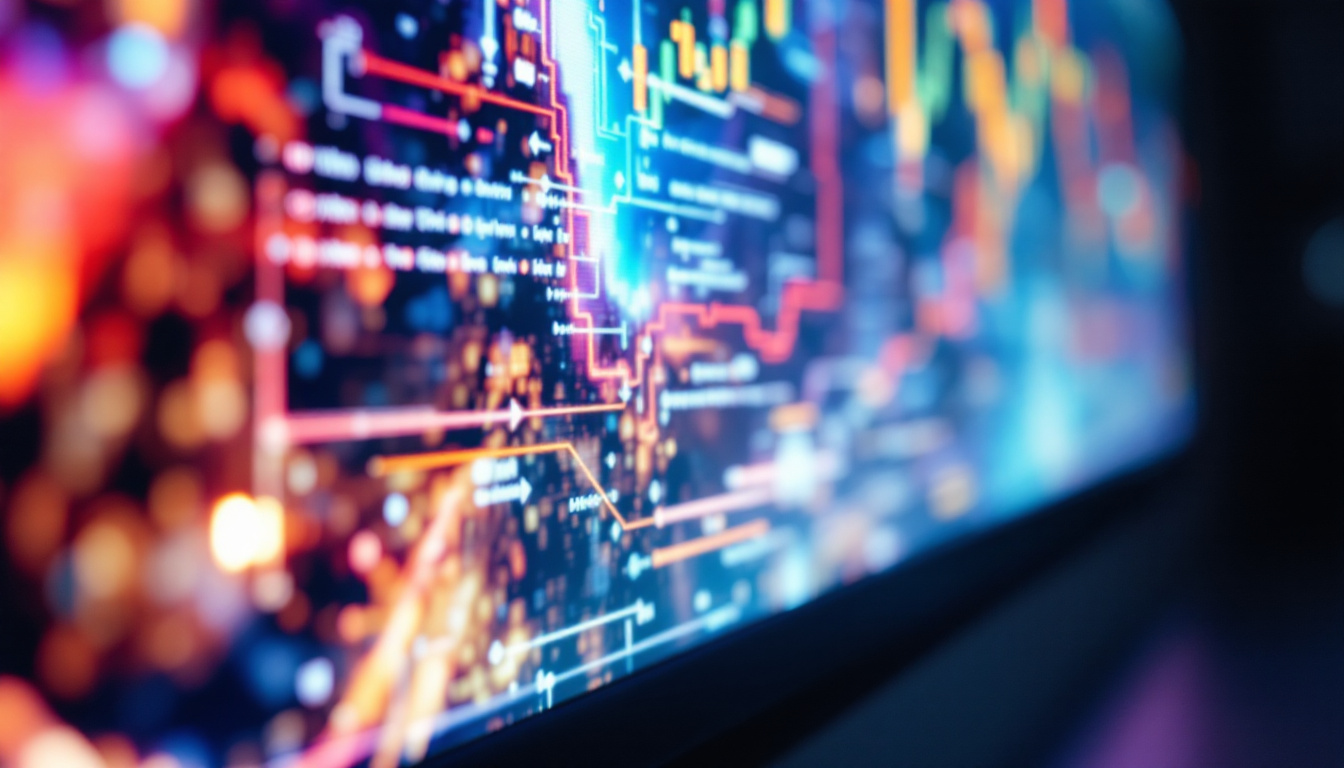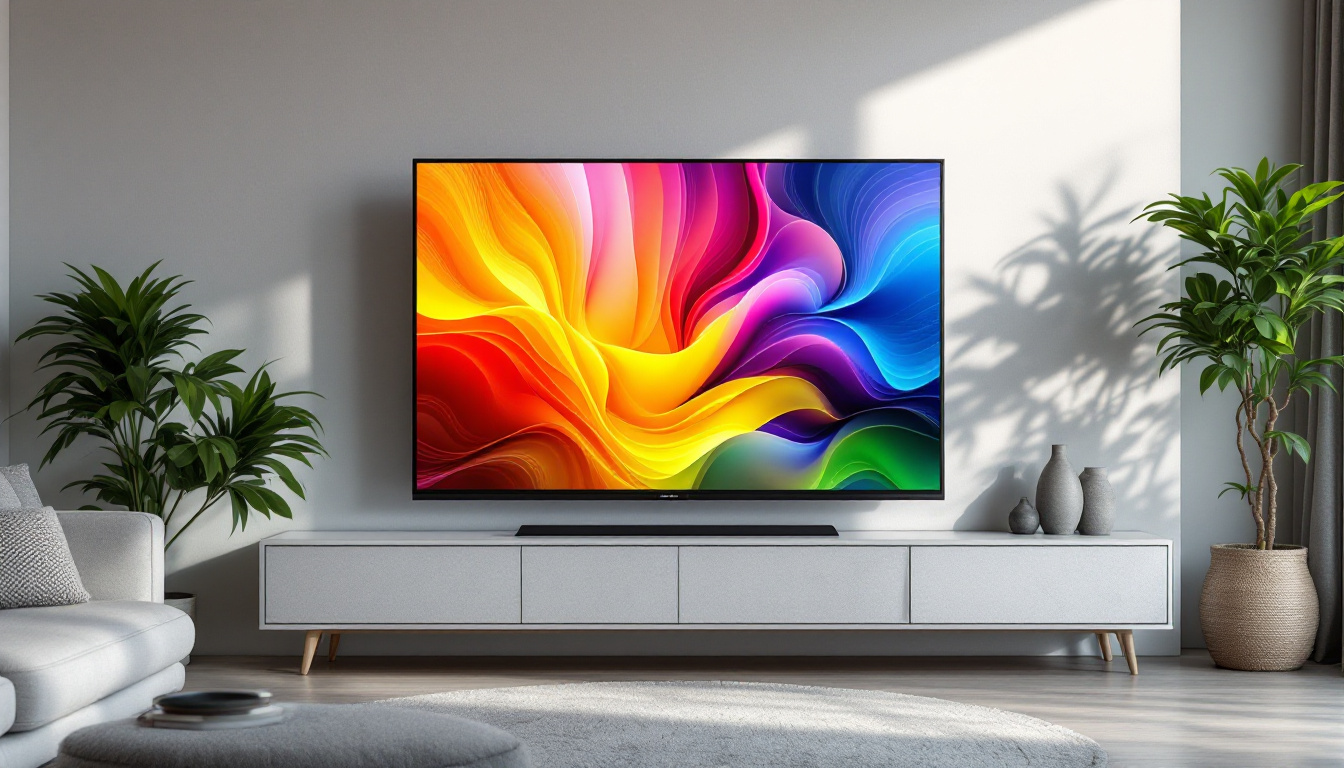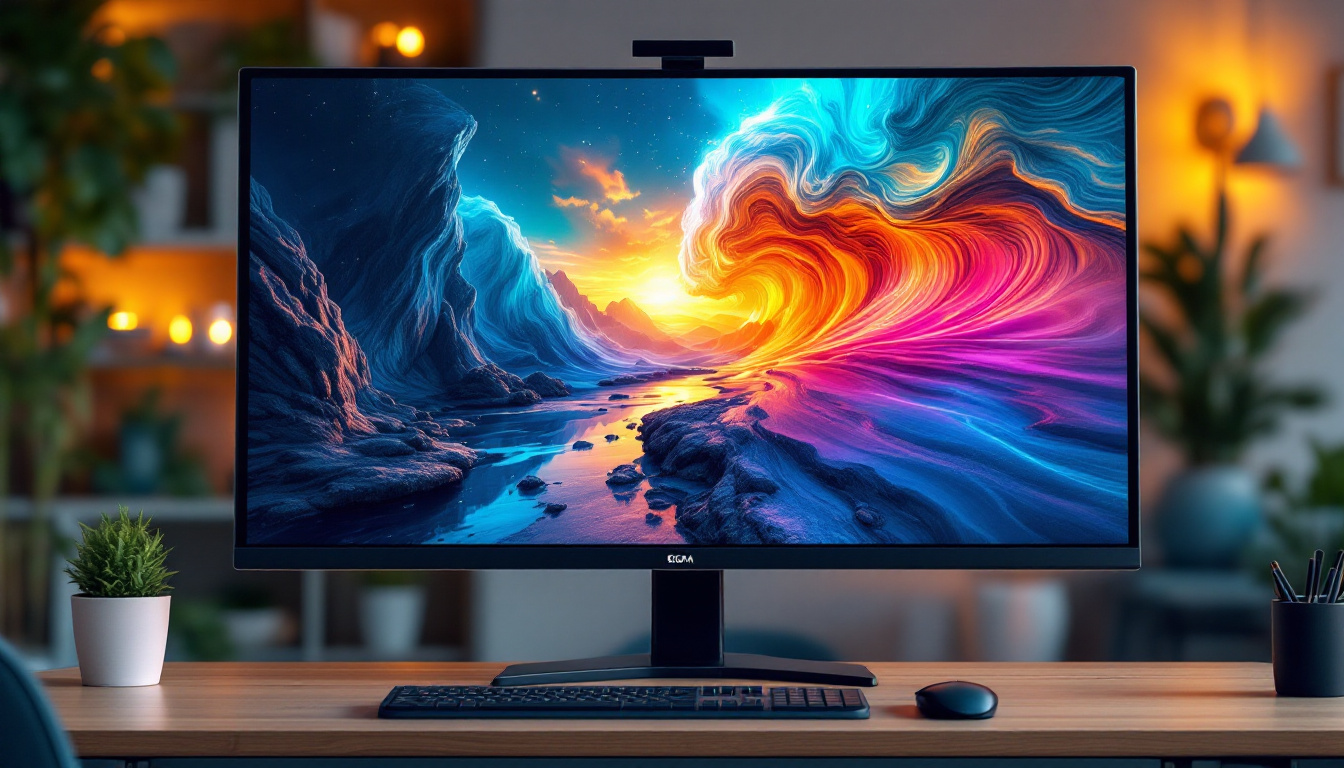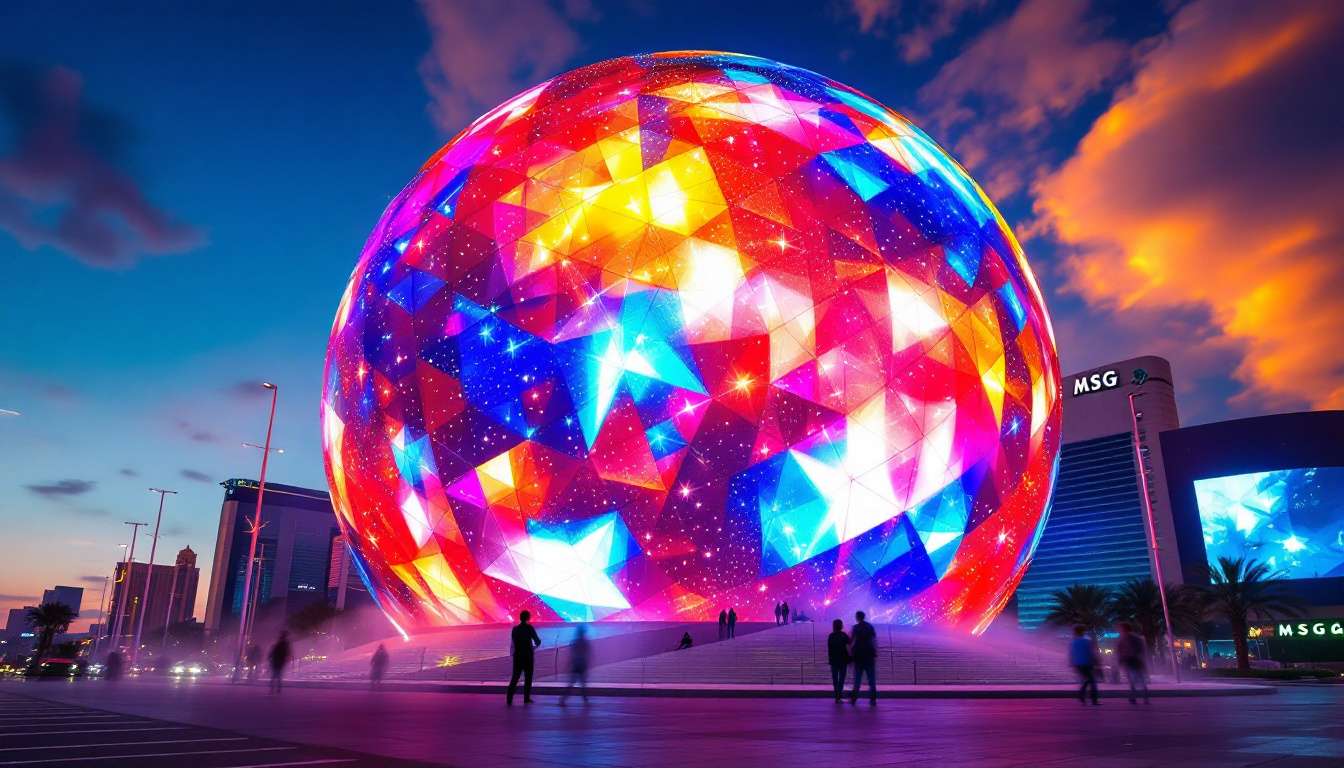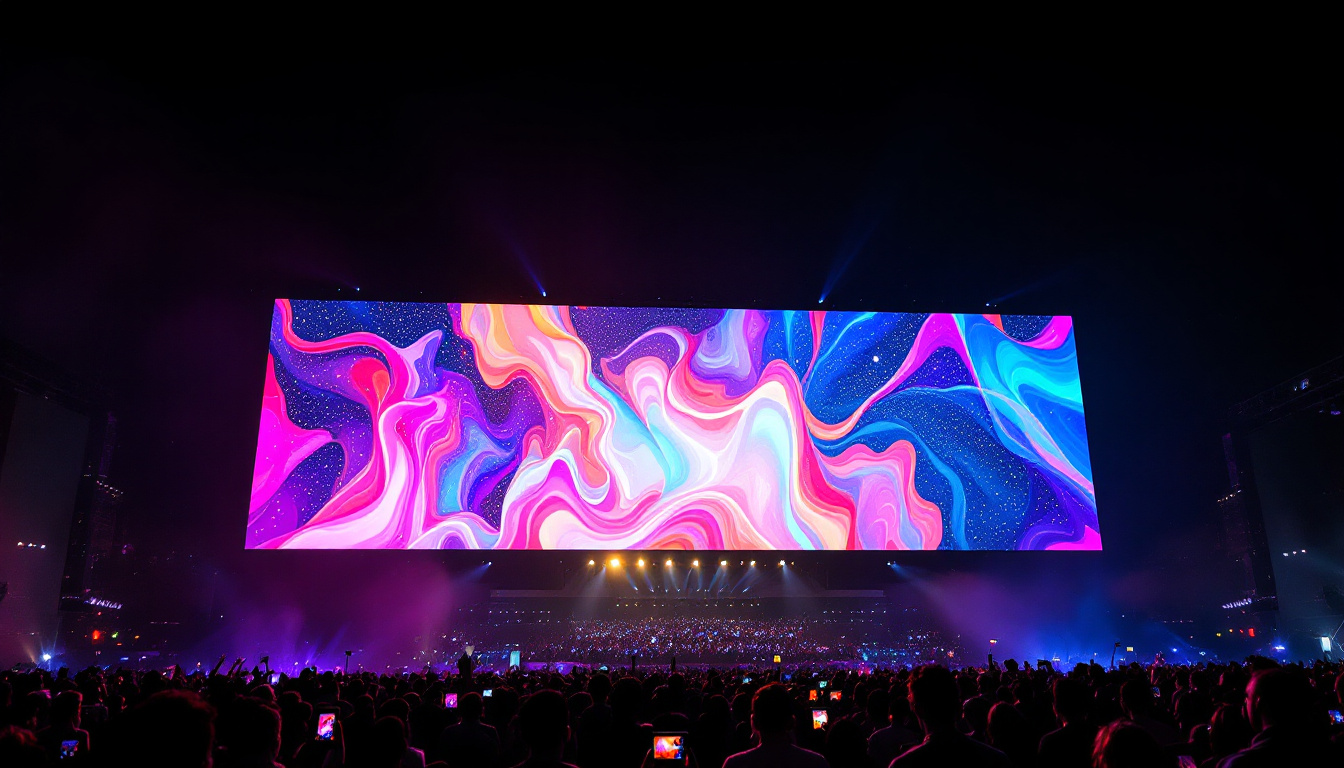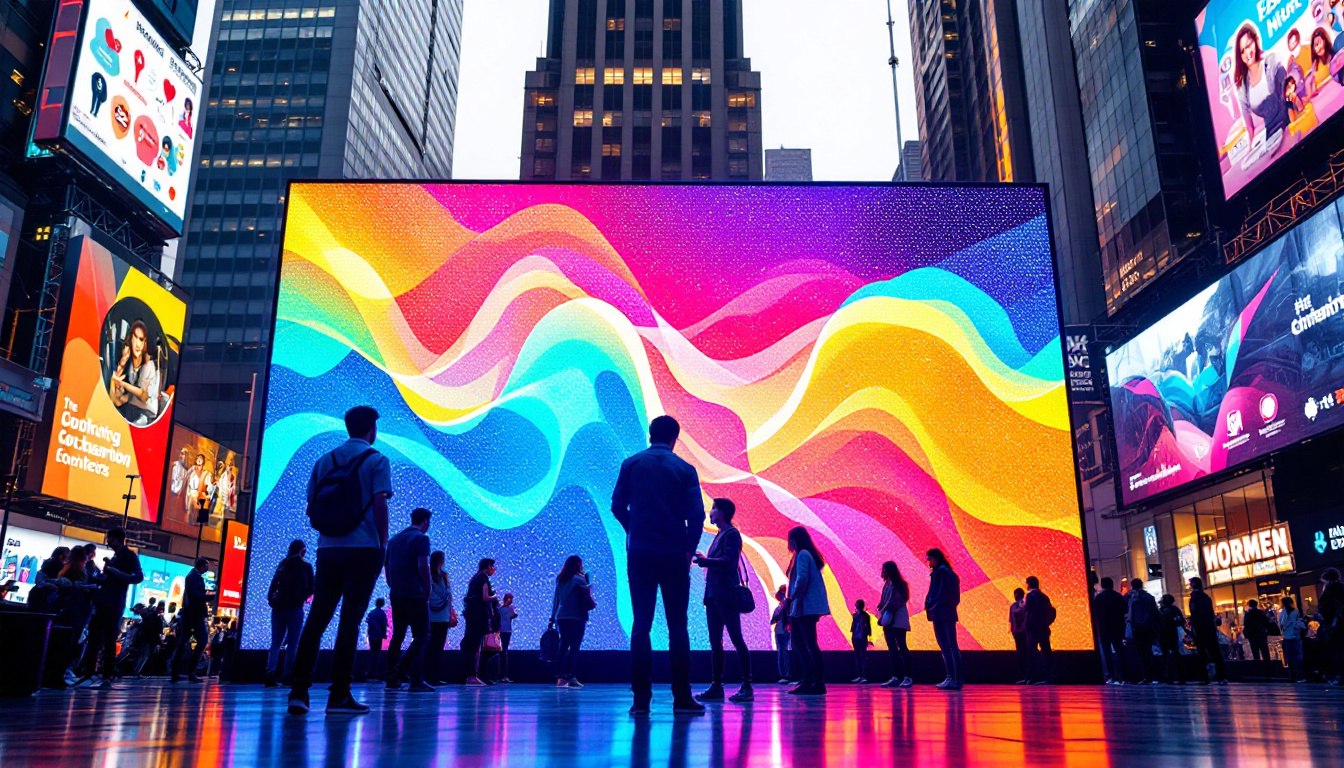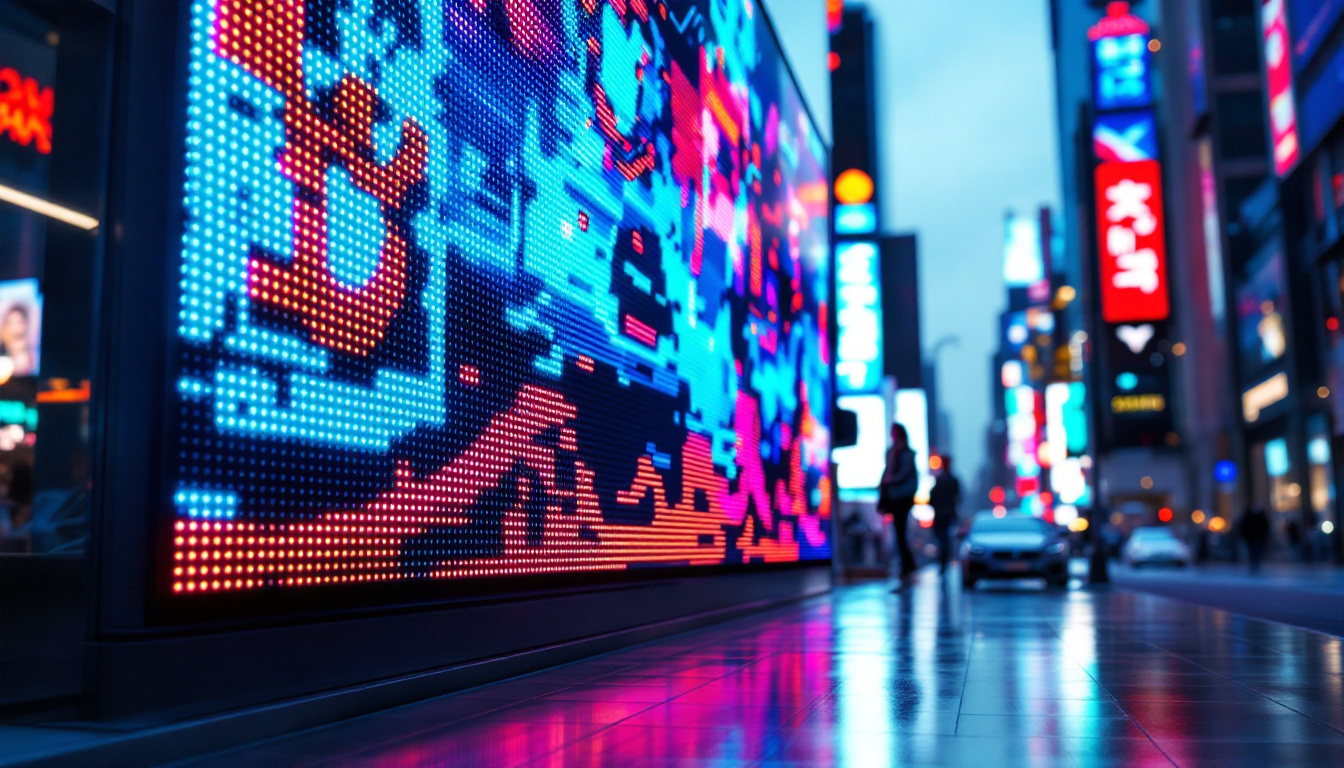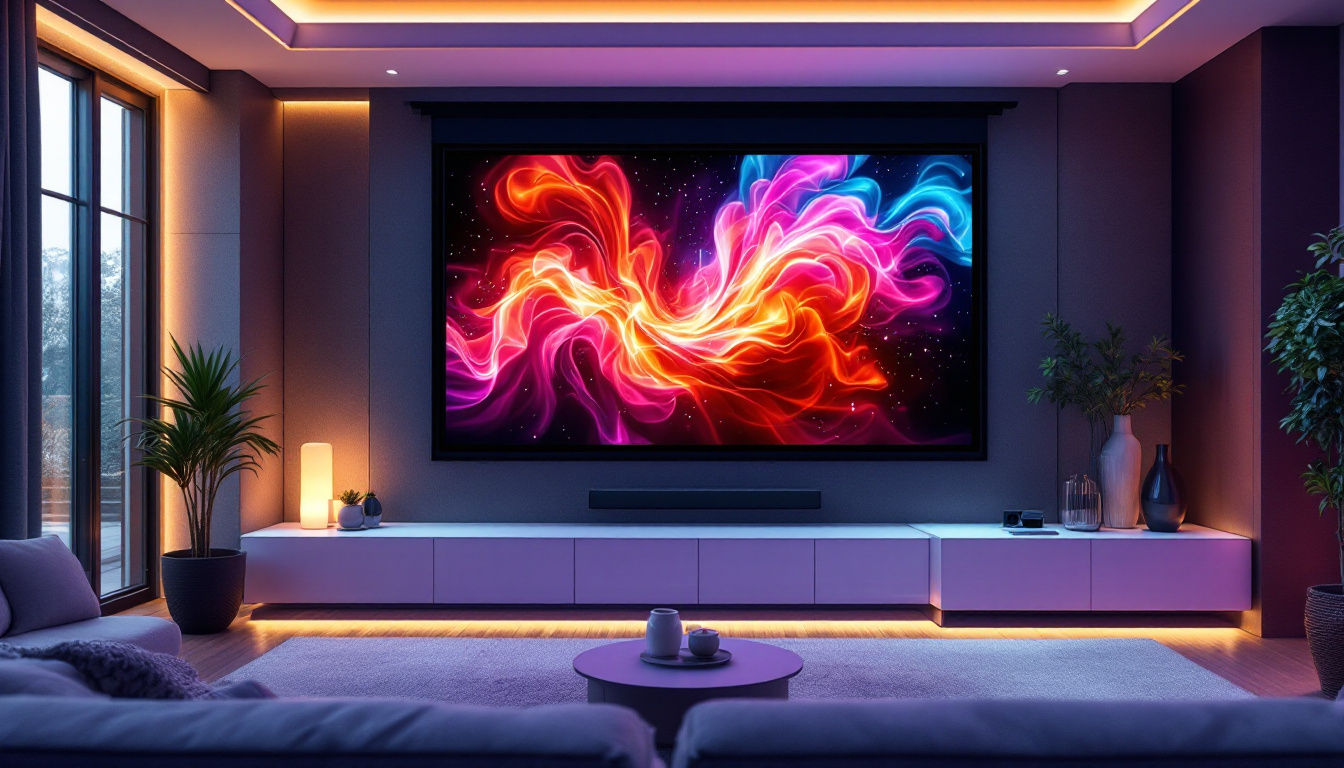In the realm of modern technology, LED displays have emerged as a pivotal component in various industries, from advertising to entertainment and beyond. Their versatility, energy efficiency, and superior image quality make them a popular choice for businesses and consumers alike. This article delves into the intricacies of LED displays, exploring their functionality, applications, and the advantages they offer.
Understanding LED Technology
LED, or Light Emitting Diode, is a semiconductor device that emits light when an electric current passes through it. This technology has revolutionized the way we perceive visual displays, offering brighter and more vivid images compared to traditional display methods. The efficiency of LEDs not only contributes to enhanced visual experiences but also plays a significant role in energy conservation, making them a popular choice for both consumer and industrial applications.
The Basics of LED Operation
At its core, an LED consists of a chip made from a semiconductor material, typically gallium arsenide or gallium phosphide. When electricity flows through the chip, electrons recombine with holes, releasing energy in the form of photons. This process is known as electroluminescence, which is the fundamental principle behind LED technology. The efficiency of this light emission is one of the reasons LEDs have become the preferred choice for lighting solutions, boasting a lifespan that can exceed 25,000 hours compared to traditional incandescent bulbs.
LEDs can produce a wide spectrum of colors by altering the composition of the semiconductor material. By combining red, green, and blue (RGB) LEDs, it is possible to create an extensive range of colors, enabling vibrant and dynamic displays. Additionally, advancements in technology have led to the development of tunable white LEDs, which allow users to adjust color temperature, providing flexibility for various environments and applications, from warm lighting in homes to cooler, more energizing light in office spaces.
Types of LED Displays
LED displays come in various forms, each designed for specific applications. The most common types include:
- Direct View LED Displays: These displays use individual LEDs to create images directly visible to the viewer. They are often used in large outdoor billboards and digital signage, where their brightness and visibility in daylight are crucial for effective communication.
- LED Backlit Displays: Commonly found in televisions and computer monitors, these displays use LEDs to illuminate an LCD panel from behind, enhancing brightness and contrast. This technology has allowed for thinner and lighter screens, making it easier to design sleek and modern devices.
- Organic LED (OLED) Displays: Utilizing organic compounds, OLED displays offer superior color accuracy and contrast ratios, making them ideal for high-end televisions and smartphones. The ability of OLEDs to achieve true blacks by turning off individual pixels enhances the overall picture quality, providing an immersive viewing experience.
In addition to these common types, there are also specialized LED displays such as flexible LED screens, which can be bent and shaped to fit unconventional spaces, and transparent LED displays that allow for creative advertising solutions without obstructing views. These innovations are pushing the boundaries of design and functionality in both commercial and residential settings, showcasing the versatility and potential of LED technology in the modern world.
Applications of LED Displays
LED displays have found their way into numerous applications across different sectors. Their adaptability and performance make them suitable for a wide range of environments.
Advertising and Marketing
One of the most prominent uses of LED displays is in advertising. Digital billboards and signage can be updated in real-time, allowing businesses to promote their products and services dynamically. The bright colors and high resolution of LED displays capture attention, making them an effective marketing tool.
Moreover, LED displays can be programmed to showcase various advertisements throughout the day, maximizing exposure and engagement. This flexibility allows businesses to tailor their messaging based on time, audience, and location. For instance, a restaurant might display breakfast specials in the morning and switch to dinner promotions in the evening, ensuring that the content is relevant to potential customers at all times. Additionally, the use of LED displays in public transportation hubs and airports can guide travelers with real-time information, enhancing their overall experience.
Entertainment and Events
In the entertainment industry, LED displays play a crucial role in concerts, sporting events, and festivals. Large video walls made of LED panels provide immersive experiences, enhancing the visual appeal of performances. These displays can also be used for live broadcasting, ensuring that audiences, both on-site and at home, receive high-quality visuals.
Additionally, the ability to create stunning visual effects using LED technology has transformed stage design, allowing for innovative and captivating presentations that engage viewers like never before. For example, during a live concert, LED screens can synchronize with the music, creating a multisensory experience that captivates the audience. The versatility of LED displays also extends to outdoor events, where they can withstand various weather conditions while delivering vibrant content, making them a reliable choice for any occasion.
Corporate and Educational Use
LED displays are increasingly utilized in corporate environments for presentations, meetings, and training sessions. Their clarity and brightness ensure that information is conveyed effectively, even in well-lit rooms. Interactive LED displays can also facilitate collaboration, allowing multiple users to engage with the content simultaneously.
In educational settings, LED displays have become valuable teaching tools. They can be used to display educational content, interactive lessons, and multimedia presentations, making learning more engaging for students. Furthermore, the integration of LED technology in classrooms can foster interactive learning experiences, such as virtual field trips or real-time quizzes, encouraging student participation and enhancing retention of information. As schools continue to embrace digital transformation, LED displays are poised to play a pivotal role in shaping the future of education, bridging the gap between traditional teaching methods and modern technological advancements.
Advantages of LED Displays
The rise of LED technology can be attributed to several key advantages that set it apart from traditional display methods. Understanding these benefits can help businesses and consumers make informed decisions when selecting display solutions.
Energy Efficiency
One of the most significant advantages of LED displays is their energy efficiency. Compared to traditional incandescent or fluorescent lighting, LEDs consume significantly less power while providing higher brightness levels. This not only reduces electricity costs but also contributes to a lower carbon footprint, making LED displays an environmentally friendly choice.
Longevity and Durability
LED displays are known for their longevity, often lasting up to 100,000 hours or more, depending on usage and maintenance. This durability reduces the need for frequent replacements, resulting in lower overall costs for businesses. Additionally, LED technology is less susceptible to damage from shocks and vibrations, making it ideal for outdoor applications.
Superior Image Quality
When it comes to image quality, LED displays excel in providing vibrant colors, deep contrasts, and high resolution. The ability to produce a wide color gamut ensures that images appear lifelike and engaging. Furthermore, LED displays maintain their performance in various lighting conditions, making them suitable for both indoor and outdoor use.
Challenges and Considerations
While LED displays offer numerous benefits, there are also challenges and considerations that potential users should keep in mind. Understanding these factors can help ensure a successful implementation of LED technology.
Initial Costs
Although LED displays are cost-effective in the long run, the initial investment can be higher compared to traditional display technologies. Businesses must weigh the upfront costs against the potential savings in energy and maintenance over time. However, as technology advances, prices for LED displays continue to decrease, making them more accessible.
Technical Expertise
Installing and maintaining LED displays may require specialized technical expertise. Businesses should ensure they have access to qualified professionals who can handle installation, troubleshooting, and repairs. This consideration is crucial for maximizing the lifespan and performance of the display.
Content Management
To fully leverage the capabilities of LED displays, effective content management is essential. Businesses must invest in software and systems that allow for easy updates and scheduling of content. A well-planned content strategy can significantly enhance the effectiveness of LED displays in achieving marketing and communication goals.
The Future of LED Displays
The future of LED displays looks promising, with ongoing advancements in technology paving the way for even more innovative applications. As the demand for high-quality visual experiences continues to grow, manufacturers are exploring new materials, designs, and functionalities.
Emerging Technologies
One of the most exciting developments in LED technology is the emergence of MicroLED displays. These displays use microscopic LEDs to create images, offering even greater resolution and flexibility. MicroLED technology has the potential to revolutionize everything from televisions to wearable devices, providing users with unparalleled visual experiences.
Additionally, advancements in organic LED (OLED) technology are leading to thinner, more flexible displays that can be integrated into a variety of surfaces, from clothing to furniture. This opens up new possibilities for advertising and interactive experiences.
Sustainability Initiatives
As environmental concerns continue to rise, the LED industry is also focusing on sustainability. Manufacturers are exploring eco-friendly materials and production processes, as well as recycling programs for old displays. These initiatives aim to reduce waste and promote a circular economy within the technology sector.
Integration with Smart Technology
The integration of LED displays with smart technology is another trend shaping the future of this industry. Smart LED displays can connect to the internet, enabling real-time updates, remote management, and interactive features. This connectivity enhances the user experience and allows for more dynamic content delivery.
Conclusion
LED displays have transformed the way visual information is presented across various industries. Their energy efficiency, durability, and superior image quality make them an ideal choice for businesses looking to enhance their marketing and communication efforts. While challenges exist, the benefits of LED technology far outweigh the drawbacks.
As advancements continue to emerge, the future of LED displays promises even more exciting possibilities. From emerging technologies like MicroLED to sustainable practices and smart integrations, LED displays are poised to remain at the forefront of visual communication for years to come.
In a world where visual engagement is paramount, understanding and leveraging LED technology can provide businesses with a competitive edge. Embracing this technology not only enhances brand visibility but also contributes to a more sustainable and innovative future.
Discover LumenMatrix’s Advanced LED Display Solutions
Ready to elevate your visual communication strategy with the latest in LED display technology? Look no further than LumenMatrix, a pioneer in crafting immersive and dynamic LED experiences. Whether you’re in need of an Indoor LED Wall Display for your corporate headquarters, an eye-catching Outdoor LED Wall Display for advertising, or any of our other innovative products like Vehicle LED Displays, LED Sports Displays, and Custom LED solutions, LumenMatrix has the expertise to bring your vision to life. Embrace the future of digital signage with our All-in-One and Transparent LED Displays, designed to captivate and engage your audience. Check out LumenMatrix LED Display Solutions today and transform your brand’s presence with unparalleled clarity and impact.


